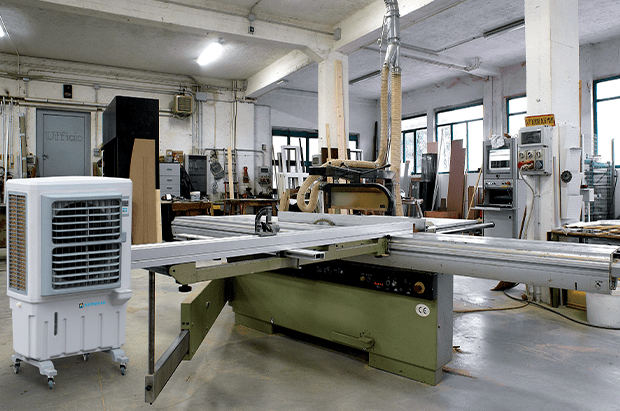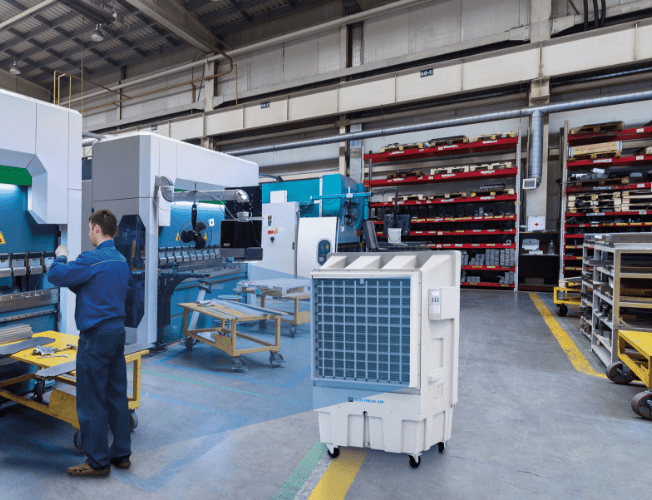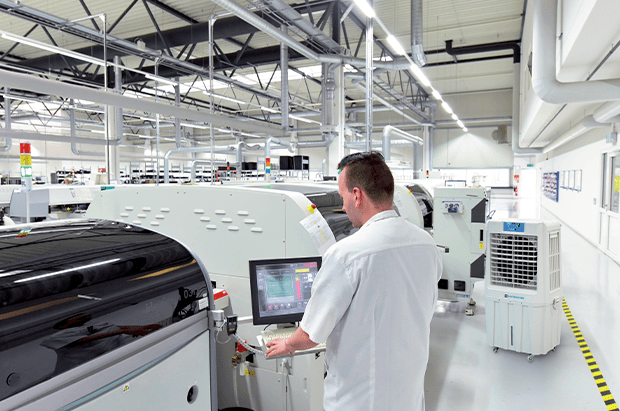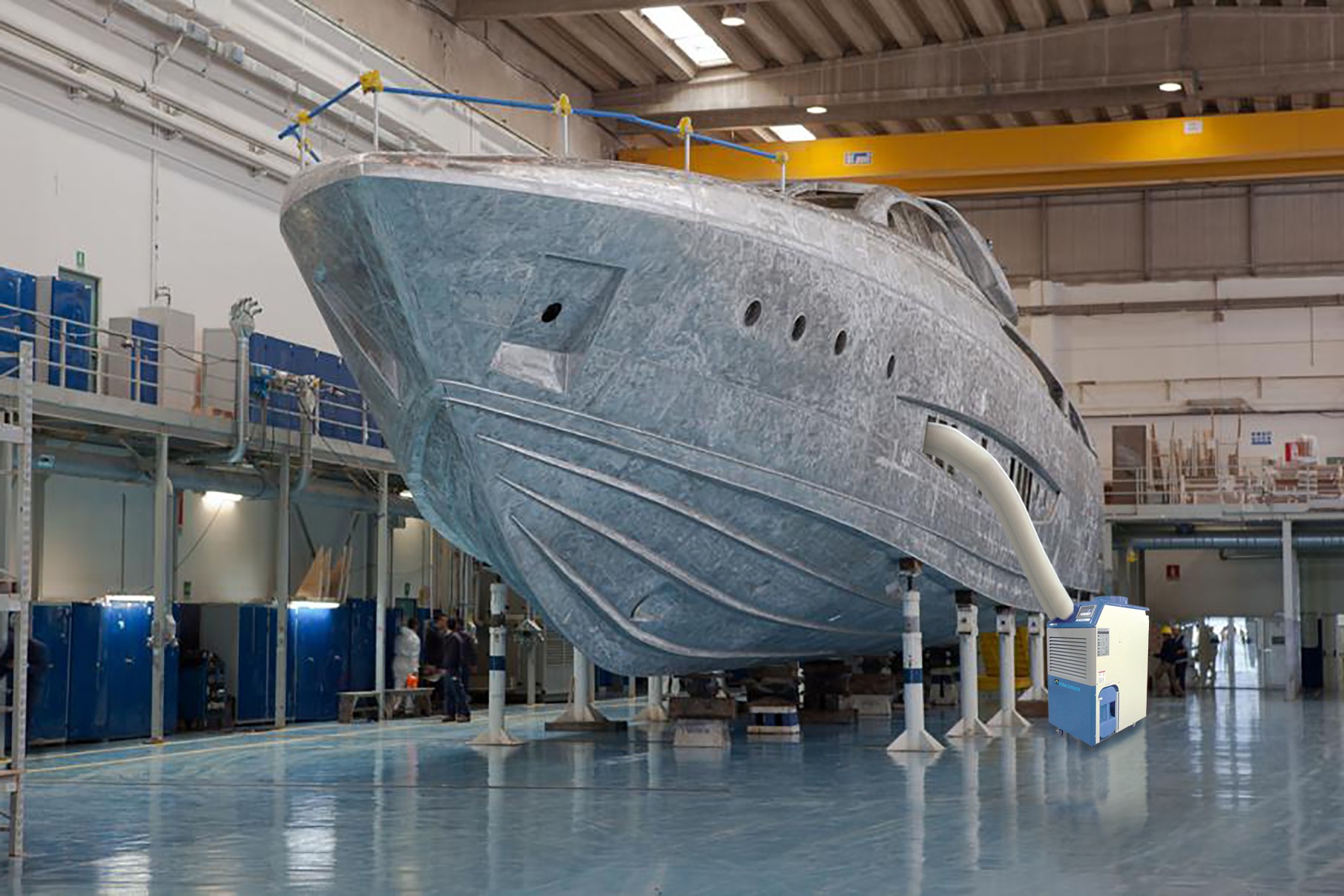
Imagine this scenario: July, Po Valley, 30° in the shade, 80% relative humidity and no trace of wind. Inside the warehouse, machine tools heat up the environment and create fumes and dust, making the air inside completely unbreathable, although the extraction system still does its job.
Does this sound like a familiar scenario? Very often, understanding how to cool an industrial building is not just an option, but a real necessity.
How to cool an industrial building?: the most common methods
Cooling an industrial building can be a challenge, especially if the building is large and the outdoor climatic conditions are unfavourable. However, there are some solutions that can be adopted to reduce the temperature inside the building and improve working conditions for the operators.
- Natural ventilation: if the building has windows or doors on several sides, natural ventilation can be used to circulate the air, creating a flow that can reduce the temperature by several degrees. But you have already thought about that, right?
- Artificial ventilation: if the climate does not help, artificial ventilation can be a solution, albeit an inefficient one. Installing wall or ceiling fans can help you circulate air inside the hall, reducing the temperature.
- Sun blinds: they also work on an industrial level, if placed over doors or windows, they can help reduce incoming heat by cooling the building. Sun blinds, however, are not sufficient to ensure adequate cooling of the building.
- Reflective materials: To reduce incoming heat, the parts of the roof most exposed to the sun can also be covered with reflective materials, reducing the building’s heat absorption. But this solution alone is not enough, and should be adopted as a back-up to another cooling system, with a view to improving the overall result.
- Misting system: a misting system can be used to cool the air inside the building by emitting water mist, cooling the surrounding air. However, this system is inefficient and not suitable for all environments.
- Air conditioning: an air conditioning system appropriate to the size of the building can be an effective solution. However, in very large rooms it is difficult to achieve adequate cooling efficiency, besides the fact that the cost and consumption of an air conditioner is not affordable for everyone.
- Evaporative cooling: is a cooling method that uses the natural phenomenon of water evaporation to reduce the air temperature. It is a system that can bring immediate and localised cooling – even in very large spaces and outdoors – with very low consumption.

How to cool an industrial building with evaporative coolers?
That pleasant feeling of well-being when breathing in front of a waterfall? Don’t worry, there is no loss of water; evaporative cooling uses the phenomenon of evaporation to generate fresh, clean air: the warm air passes through a water-soaked cellulose panel, the heat is retained by the panel, and the water evaporates, emitting a stream of fresh air.
Evaporative cooling is effective because it creates very localised cooling zones and consumes little energy. This is why it is widely used for cooling outdoor terraces, industrial sheds and commercial spaces of all sizes.
Cooling an industrial building with evaporative cooling can be a cost-effective solution.

The advantages of Star Progetti evaporative coolers
Since 2001 we have been manufacturing evaporative coolers for any type of environment, and we were the first to equip the coolers with a UV device capable of sterilising the water, preventing the dangerous formation of mould and bacteria.
- They are efficient because they are able to create very localised cooling zones without wasting energy.
- They are sustainable and environmentally friendly because they exploit a natural phenomenon and energy consumption is very low.
- They save you money because they do not need much maintenance and have no installation costs.
- They effectively reduce room temperatures by up to 7°C.
- They are simple and space-saving, and easy to manoeuvre.
- They are safe for your health because they are equipped with a UV device that can sterilise water.
